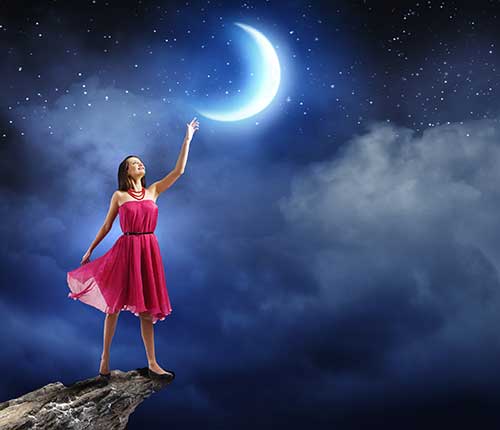Human sleep cycles normally consist of five stages
That occur over and over, in a cycle, in an average time duration of about 90 minutes. Immediately after you fall asleep, the REM sleep phases are relatively shorter and the periods of deep sleep are longer than later during the night.
The longer you sleep, the longer are the REM periods and the shorter are the deep sleep times. When you fall asleep, you go from stage 1, through each stage, to REM sleep, and the cycle repeats again and again until you wake.
The human sleep cycles can repeat from four to seven times in a single night, and a person can dream a number of different things during that time. The various stages of the cycle are characterized by specific changes in brain activity.
Here is a stage by stage breakdown of what happens while you are sleeping.

In stage one of the sleep cycle
Yyou tend to drift in and out of sleep, and wake at the slightest disturbance. The eye movements and muscle activity are slow and many people experience sudden contractions and jerking awake, usually accompanied by a dream of falling or tripping.
The sleep during this stage is light and the jerks and starts are caused by the spontaneous stimulation of the motor areas of the brain. The slow eye movements are also called non-rapid eye movements or NREM. The body temperature begins to lower and the heart rate slows down during this stage in preparation for deep sleep.
In stage two of human sleep cycles
Eye movements stop completely, and brain waves settle into a slower rhythm punctuated by occasional bursts of rapid activity, called sleep spindles.
The stage accounts for a bout half your sleep time, and is also characterized by NREM. Body temperature falls further, muscles relax, and the system gears up to repair all the physical damage you have done to yourself in the day.
Physical growth, and the reconditioning of muscles, also takes place during this stage of sleep.

Stage three is characterized by super slow delta wave brain activity
With intermittent smaller or faster brain waves. This stage is the first deep sleep phase, and waking someone during this phase can be difficult. Forced awakening during stage three causes grogginess and disorientation that can last for minutes at a time.
Metabolism slows down as the body shifts focus from digesting food to using the resources for repair and growth.
Stage four of the human sleep cycle is characterized by an almost exclusive production of the slow delta waves.

Stage five, REM sleep
This stage of the sleep cycles when your breathing speeds up, and becomes irregular and shallow. Rapid eye movement occurs (hence REM) and your muscles become temporarily paralyzed. Hearts beat faster, and blood pressure and brain activity rise.
This stage of sleep is thought to revitalize the mind and emotions and accounts for a majority of the night’s dreaming. REM sleep is important in long-term retention of memories. Babies spend almost half of their total sleep time in REM while grown ups REM accounts for about 20% of their total sleep. As you age, you spend less and less time in REM sleep.
The stages of the sleep cycles, except the first, of course, repeat cyclically through the night. In later cycles, you go through stages two to four much more quickly, and spend more and more time in REM sleep.








